All these photographs are taken in the wild. Times and dates relate to individuals I have observed
but there is great variation even in the same locality. Most caterpillars hibernate in the third instar
but some do so in the second and (in my experience) their development remains behind their cousins'
for the rest of their larval lives.
Refresh page if pictures don't load fully:
EGGWhen freshly laid, eggs are a rather pale turquoise/green. This one was found on 27th July:

This is the same egg 24 hours later, showing a maroon band around the base:

This egg was found on 2nd August:

Eggs are laid singly on the upper surface of fresh sallow leaves, in half shade:

After 9-10 days the egg changes colour. The dark at the top is the head of the caterpillar inside:


This diagram gives an idea of the timescale of egg-ripening:

1ST INSTAR
The caterpillar opens a lid at the top of the egg and climbs out. These pictures were taken in a shady wood on a grey day - hence the grainy images.

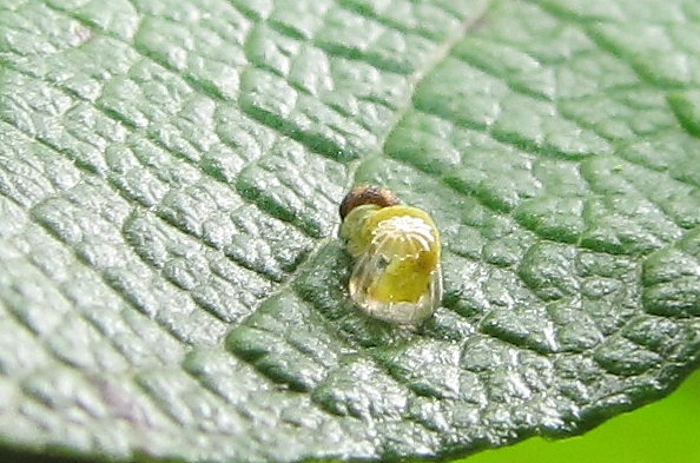

It then eats the egg, before moving to the tip of the leaf:
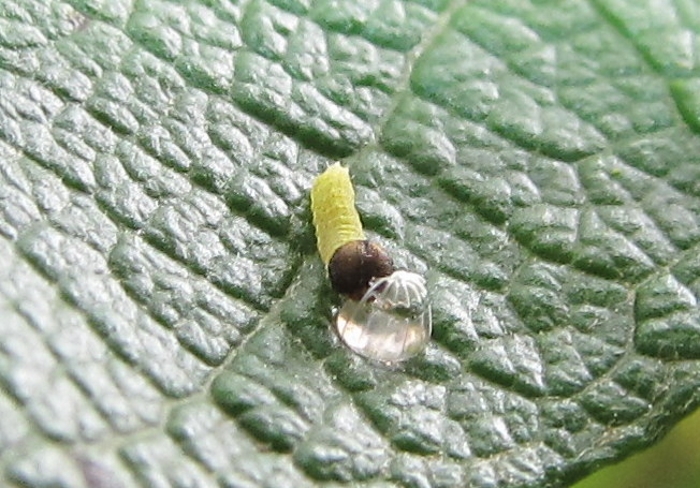

('That was good!')
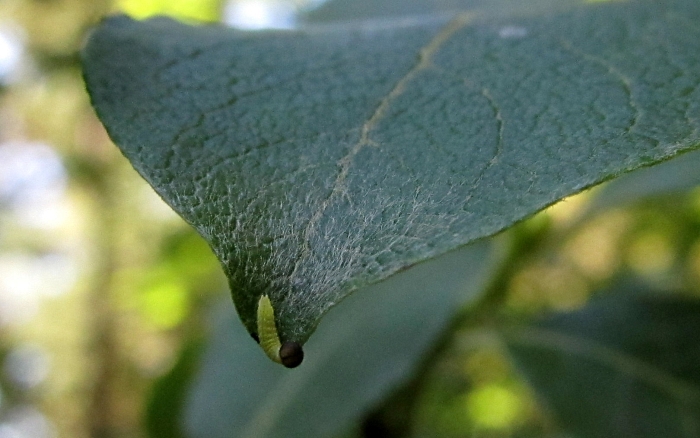
The tiny caterpillar rests in the tip of the leaf come rain or high water:

The next pictures show a caterpillar on day 6 ...

... and on day 13, when the horns of the next instar are visible as a pale swelling beneath
the skin behind the head:

2ND INSTAR
During the first skin change the larva loses the dark head capsule and reveals two horns, that were concealed in the shoulder pad.
This fuzzy picture shows a caterpillar near the end of the process, with the horns still soft and bent and the head capsule still adhering to its face:

Half an hour later the horns were straight and the head capsule lay beside the caterpillar:
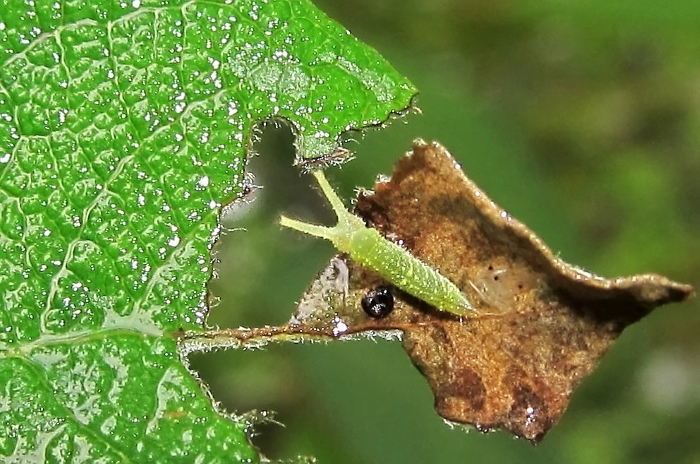
Several hours later, the head and horns had coloured up:
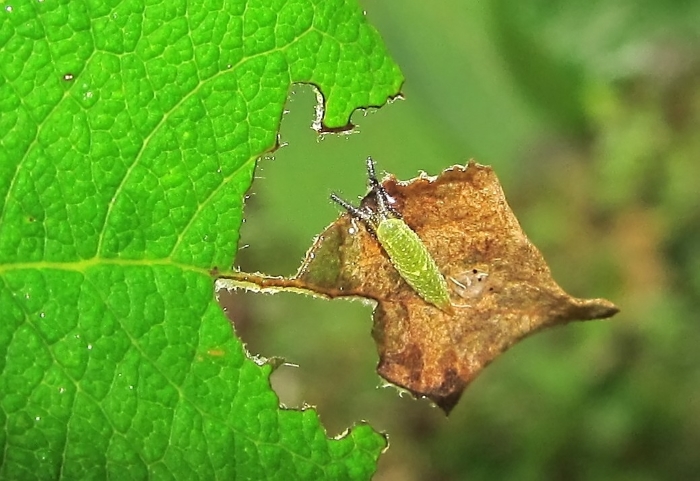
(the right horn appears distorted because of water droplets on it)
The next picture shows a day-old second instar caterpillar:

The next one is about a week old:

THIRD INSTAR
This is normally the longest stage of the caterpillar's life as it is usually in this instar that
it passes the winter.
Late September:

Early October:

Late October. The leaf has turned but is secured by silk so it doesn't fall.
The caterpillar is growing hoary and changing colour too:

In late October or early November the caterpillar takes up residence on a sallow twig, often curled over a joint or nestled in a crack.

This photograph was taken in February:

Here are some more hibernating caterpillars, showing the variety of locations used:


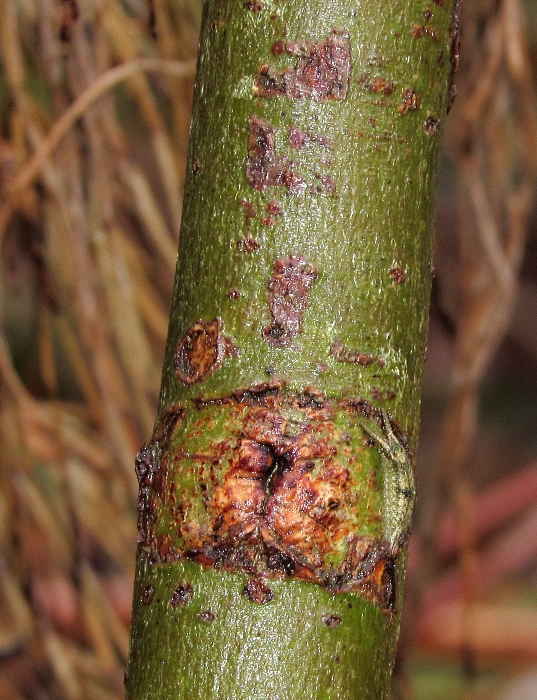

It remains in its chosen hibernation site, exposed to the elements, the whole winter:

In March, it wakes up and moves towards the end of the twig, where it settles next to a bud:
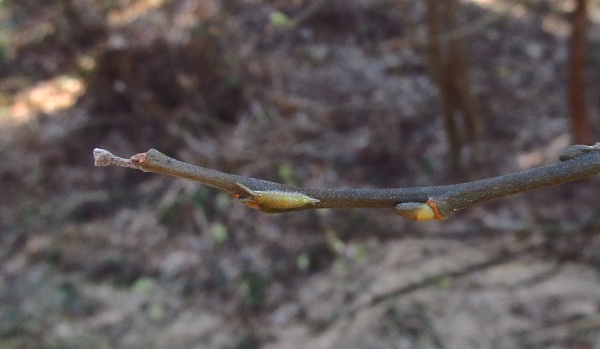
The buds begin to grow during April...

... until they catch up with the caterpillar:

As soon as the buds break, the 3rd instar caterpillar grabs its first meal.
Note that it has changed back to lime green:

It makes short work of the new leaves:

By early May it is well fed and ready to change skins again:

4TH INSTAR
By mid-May the 4th instar is well developed:

Here are two fourth instar larvae on the same small sapling:

Towards the end of May the caterpillar lays itself up for its final larval skin change:

During skin changes the caterpillar remains immobile in a hunched position for a couple of days, with its old skin looking transparent:

5TH INSTAR
This photograph was taken on 28th May, just after the caterpillar has shed its skin:

This is the same caterpillar on 7th June...

... and on 17th June, fully grown and ready for pupation:
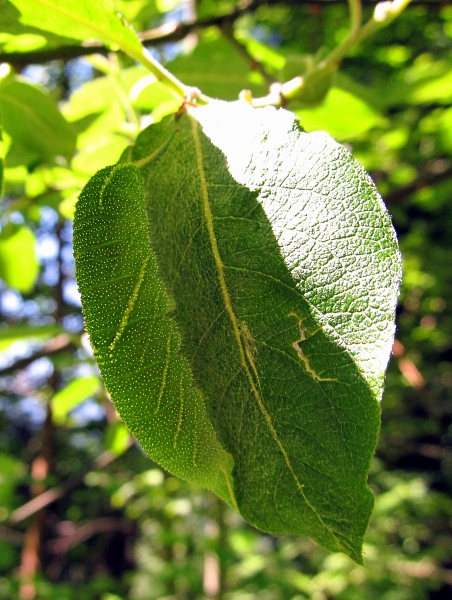
The following day that caterpillar consumed half its resting leaf and disappeared, presumably to pupate somewhere in the crown of the sallow
I never saw him again:
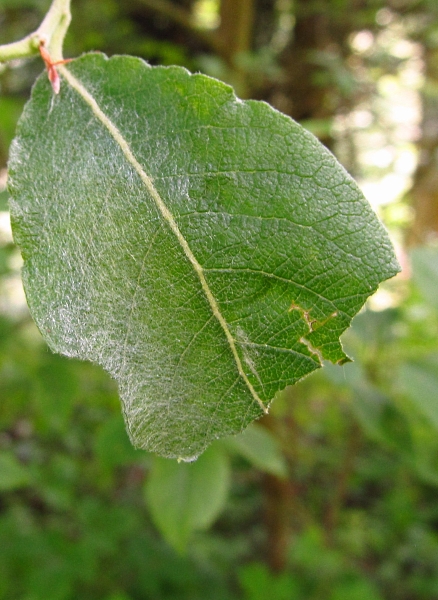
This next caterpillar left his sallow sapling to pupate on a sycamore leaf:
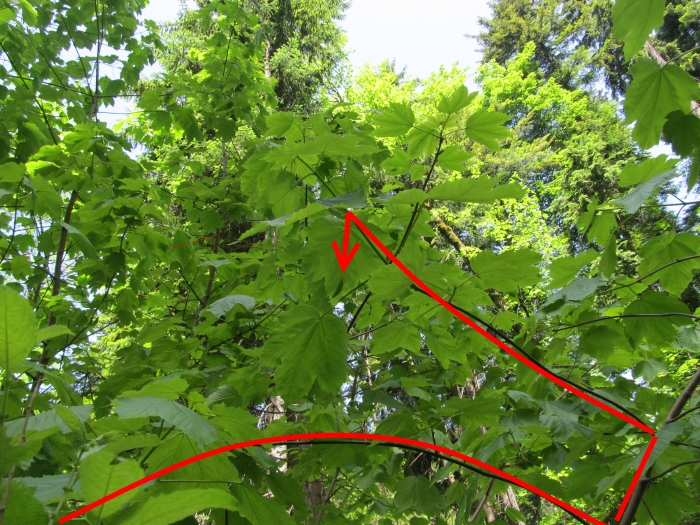
Two days before pupation:

One day before pupation:

The evening before pupation:
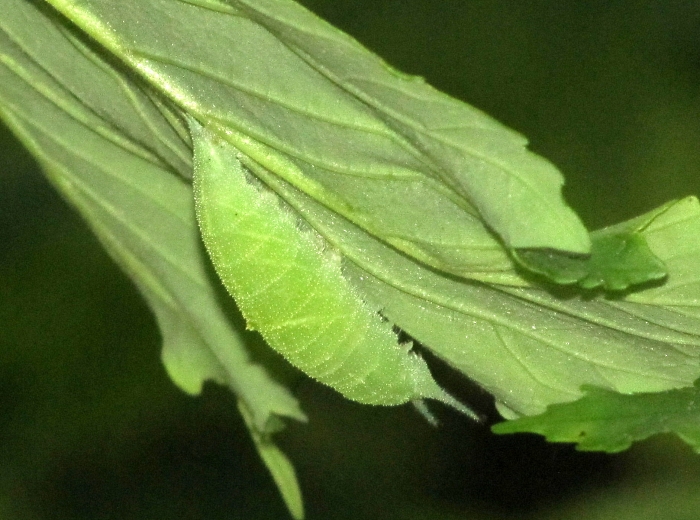
His pupa is the fourth shown below.
More typically, the caterpillar will choose a sallow leaf to pupate on, like this one:
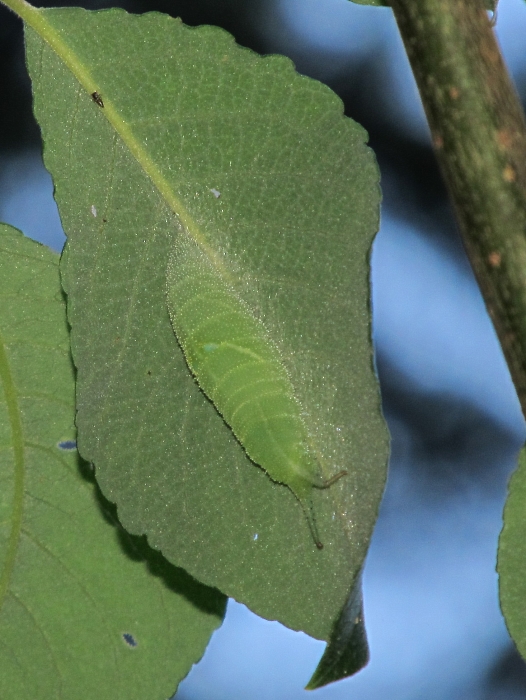
PUPA
The pupa is suspended beneath a sallow leaf (usually). Here are three different pupae:


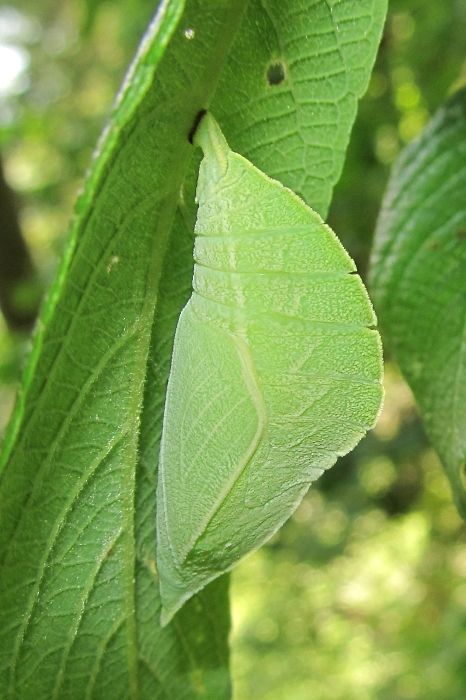
Occasionally another leaf may be used. This pupa is hanging beneath a sycamore leaf:
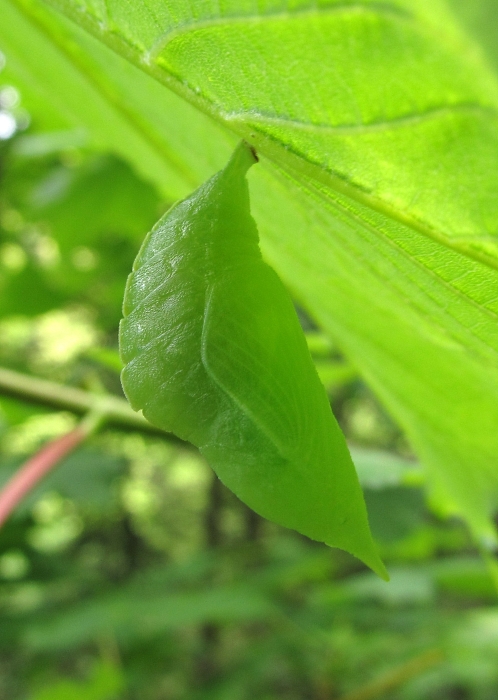

After about two weeks the chrysalis breaks open and the butterfly emerges.
I filmed this in my living room, after rescuing the pupa when its grove was cut down:
The adult hangs next to its chrysalis while the wings dry. It is active after a couple of hours but it takes many more hours for the wings to harden fully, so it can fly.
